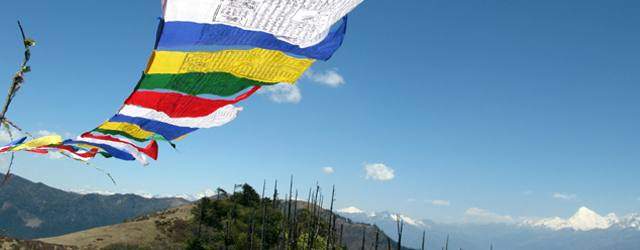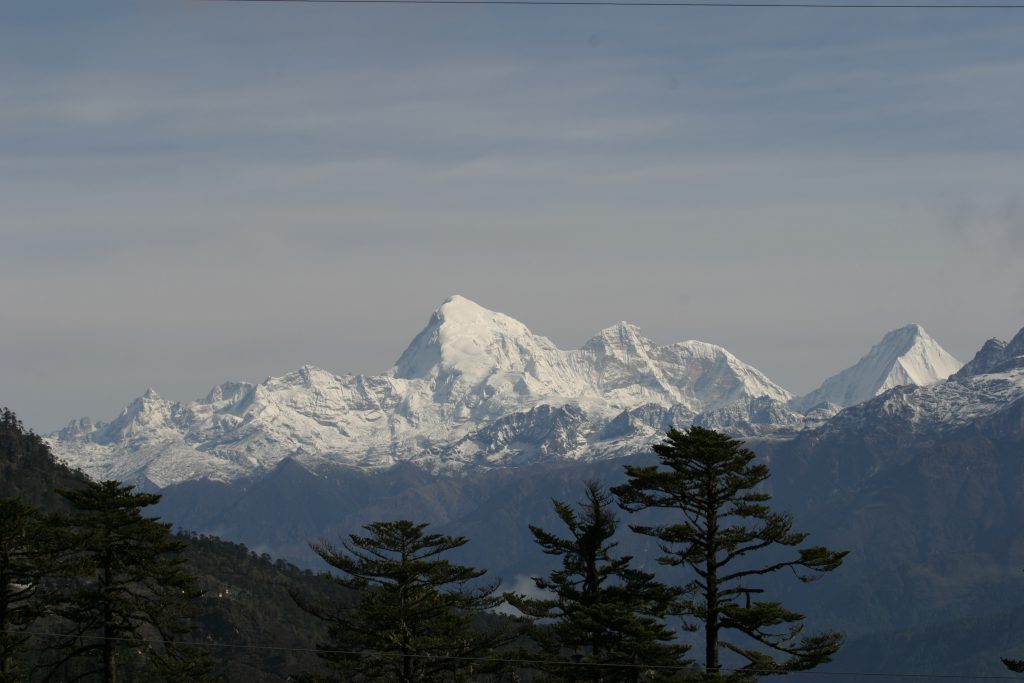Bhutan’s scenic and adventurous beauty that enchants tourists with diverse landscapes like Paro Valley’s Tiger’s Nest Monastery, Punakha Valley’s River confluence, Phobjikha Valley’s wilderness, Haa Valley’s alpine vistas, Bumthang Valley’s cultural sites, Dochula Pass’s Himalayan panoramas, Chele La Pass’s lofty views, and the breathtaking sight of Paro Taktsang from its viewpoint. These destinations showcase Bhutan’s natural splendor in all its glory.

Bumthang Owl trek
Day 1 – Paro to Thimphu – The capital of Bhutan
Day 2 – Thimphu to Punakha
Day 3 – Punakha – the terraced fields
Day 4 – Punakha to Trongsa – the seat of former power
Day 5 – Trongsa to Bumthang – the host-land of Owl trek route
Day 6 – Bumthang Owl trek begins
Day 7 – Schonath to Kithephu Ridge
Day 8 – The end of the trek – Kithephu to Tharpaling monastery.
Day 9 – Bumthang to Paro
Day 10 – Full day hike to Tigers nest monastery
Day 11 – Depart from Paro
Day 1 – Paro to Thimphu – The capital of Bhutan
Arrive at paro and drive to Thimphu. Enroute stop at tamchog lhakhang and visit the iron chain bridge built by the Tibetan saint. Upon reaching Thimphu, visit major museums like textile museum, post office, and simply Bhutan. Evening at leisure.
Day 2 – Thimphu to Punakha
Morning, visit to memorial stupa, the biggest landmark of Thimphu and Buddha dordhenma statue which is one of the largest staues of its kind in the world. Later visit simtokha dzong, the first dzong built in the country to subjugate the evil and later used as a defending barrack in 17th century. Spend some time at dochula pass which affords the panoramic view of Bhutan Himalayas and 108 Bhutanese style stupas. Check in to hotel.
Overnight in Punakha.
Day 3 – Punakha – the terraced fields
Start your day with a visit to the majestic Punakha dzong which stands in the confluence of the male and the female river. Later visit the longest suspension bridge and chimmi lhakhang popularly known as the fertility temple where childless couple visit there to get the blessing from the devine madman. One can even opt for the rafting.
Overnight in Punakha
Day 4 – Punakha to Trongsa – the seat of former power
Drive to trongsa via chele la pass and stunning view of mangde chu river crossing the clustered villages of Rinchengang and Rukubji. Visit trongsa dzong and ta dzong (museum) upon reaching to trongsa dzong.
Overnight in Trongsa.
Day 5 – Trongsa to Bumthang – the host-land of Owl trek route
Drive to Chumey Valley, the center of traditional Yathra weaving and interact the weavers to learn more about these famous craft. Upon reaching Bumthang, visit kurje lhakhang and Jmabay lhakhang which are the most important and the famous pilgrim place for locals.
Overnight in Bumthang.
Day 6 – Bumthang Owl trek begins
Drive to Menchugang village and climb to reach Chutigang village. A further uphill walk takes you to Dhur village, the home land for Kheps and Brokpas and through a forest of blue pines, firs, birch reaches the rabtentse village. About another 3 hours uphill will take you to Schonath (3450m).
Overnight at camp in Schonath.
Day 7 – Schonath to Kithephu Ridge
Begin you day with beautiful hike through the Himalayan hemlock, fir and spruce. The hike climbs to Drange la (3600m) and continues to Kithephu ridge (3875m). Today’s trek offers a phenomenal view of Gangkar Puensum, the highest mountain and one of the hight umclimbed peaks in the world.
Overnight in campsite in Kithephu.
Day 8 – The end of the trek – Kithephu to Tharpaling monastery.
The trail crosses several monasteries of the region. An hour-long hike takes you to ancient tharpaling goempa (3600m), an important religious center for Chummey valley. Another an hour hike from Tharpaling monastery takes you to Choedrak goempa (3800m) where you will have breathtaking view of Chummey valley. Climb back to the ridge and decend through a beautiful forest to Jakar OR return back to Tharpaling monastery.
Overnight in Bumthang.
Day 9 – Bumthang to Paro
Fly to Paro and visit national museum and Kyichu Lhakhang, one of the oldest monasteries in Bhutan built in 7th century with the introduction of Buddhism by the Tibetan dharma king, Songtsen Gampo. In the evening, visit floodlit dzong and enjoy the shining view of paro Valley.
Overnight in Paro.
Day 10 – Full day hike to Tigers nest monastery
Hike to Tiger’s Nest monastery the default emblem of Bhutan constructed beautifully in the middle of the cliff where Guru Padmasambhava meditated in 8th century. The 3 hours hike monastery gained its popularity to the world in the late 90’s and the early 2000 and due to its unique picturesque of the architecture. The travelers travel to these monastery as it is the highlight of the Bhutan tour where everyone try to get at least the half way. End your day with the relaxing traditional hot-stone bath which is good for bones and muscles especially after the long day hike.
Overnight in Paro.
Day 11 – Depart from Paro
Drive to Paro airport to leave this beautiful Himalayan country and take a flight back to your homeland. We hope you have taken lots of everlasting photos and memories with new friends. We look forward to seeing you back to this enchanting Himalayan realm.

Druk path trek
Day 01: Arrive Paro
Day 02: Paro
Day 03: Paro – Jele Dzong
Day 04: Jele Dzong – Jangchulakha
Day 05: Jangchulakha – Jimilangtsho
Day 06: Jimilangtsho – Simkota
Day 08: Phajoding – Thimphu
Day 09: Excursion to Punakha/Wangduephodrang
Day 10: Thimphu – Paro
Day 11: Depart Paro
Day 01: Arrive Paro
On arrival at Paro airport, you will be met by your Bhutan National Travels representative, and transferred to your Paro hotel.
Overnight at the hotel in Paro.
Day 02: Paro
Drive northwest up the valley to Drukgyel Dzong, built in 1646 by Shabdrung Ngawang Namgyal to commemorate his victory over the Tibetan invaders. Though largely destroyed by fire in 1951, its towering walls are still an imposing sight. On a clear day there is a splendid view of Mt. Jomolhari from the approach road to Drukgyel Dzong. Visit one of the typical village houses clustered near the dzong. Then visit Kyichu Lhakhang, one of the oldest and most sacred shrines of Bhutan. In the afternoon visit Ta Dzong, once a fortified lookout tower and now the National Museum. Then walk down the hillside trail to visit Rinpung Dzong (Paro Dzong), “the fortress of the heap of jewels”.
Overnight at the hotel in Paro.
Day 03: Paro – Jele Dzong
Today is a short trekking day. The journey starts with a short climb up to Jele Dzong. The trek trail ascends gradually up to the camp, and if the weather is clear Paro valley can be seen with snow-capped mountains behind. Above the camp is Jele-la pass (3,400m) and Jele Dzong (mostly in ruins). There is also a lhakhang containing a statue of Buddha Sakyamuni.
Overnight camp.
Day 04: Jele Dzong – Jangchulakha
Begin with a one and a half hour climb and then ascend more gradually upwards. The trail takes you through thick alpine forests and rhododendrons. You will have fine views of Jomolhari and other snow capped peaks if the weather is right, and you may hear some monal pheasants calling during the day. You may see yak herders around your campsite.
Overnight camp.
Day 05: Jangchulakha – Jimilangtsho
The trail follows the ridge, and on a clear day the views of the mountains and valley are sensational. You will enjoy a great view of Jichu Drake (6,989m), the peak representing the protective deity of Paro. Our camp is close to the Jimilangtsho lakes, which are famous for their giant sized trout.
Overnight camp.
Day 06: Jimilangtsho – Simkota
The trail takes you through dwarf rhododendron trees and passes by the lake of Janetsho. Today you may come across some yak herders’ camps and get an idea of how these people live. We camp overnight close to Simkota Lake, and if you are lucky you can catch a lake trout for your dinner.
Day 07: Simkota – Phajoding
Today begins with a gradual climb, and if the weather permits you will enjoy majestic views of Mt. Gangkar Puensum, and a host of other peaks. The trail slowly descends through juniper trees to a campsite beside a community hall near Phajoding cafeteria.
Overnight at cafeteria or camp, depending on weather conditions.
Day 08: Phajoding – Thimphu
The trek to Thimphu is downhill all the way, passing through a forested area of mostly blue pine. Taking a leisurely pace, you reach Thimphu in about 3 hours. Afternoon at leisure.
Overnight at the hotel in Thimphu.
Day 09: Excursion to Punakha/Wangduephodrang
After breakfast, full day excursion to the Punakha and Wangdue valleys. The drive from Thimphu crosses Dochu-la pass (3,088m) from which there are the most enchanting mountain views. In Punakha, visit Punakha Dzong situated at the junction of the Pho Chu and Mo Chu rivers. Built in the 17th century by Shabdrung Ngawang Namgyal, this dzong has played important role in Bhutan’s history. Then drive to Wangduephodrang, to visit 17th century Wangduephodrang Dzong and the local market. In the evening drive back to Thimphu.
Overnight at the hotel in Thimphu.
Day 10: Thimphu – Paro
Full day of sightseeing in Thimphu, including visits to the following, as time permits:
National Memorial Chorten: built as a memorial to Bhutan’s third king (“the father of modern Bhutan”) and as a monument to world peace;
Tashichhodzong: the impressive fortress/monastery housing some ministries, His Majesty’s secretariat, and the central monk body;
Handicrafts Emporium: a wide assortment of intricately hand-woven textiles and other craft products is available for purchase at this government-run outlet, and at many smaller handicrafts shops around town;
National Library: established in the late 1960s primarily to conserve the literary treasures which form a significant part of Bhutan’s cultural heritage, it now holds an extensive collection of Buddhist texts and manuscripts;
Institute for Zorig Chusum, more commonly known as the Painting School, where students learn the 13 traditional arts and crafts of Bhutan;
National Institute of Traditional Medicine (outside only) – the rich herbal medicines made up from plants abundant in the kingdom are dispensed here, and traditional medicine practitioners trained.
In the evening drive to Paro.
Overnight at the hotel in Paro.
Day 11: Depart Paro
After early breakfast in the hotel, drive to the airport for flight to onward destination.
- A sustainable tourism Royalty of US $65 per person per night. This Royalty goes towards free education, free healthcare, poverty alleviation, along with the building of infrastructure
- All internal taxes and charges
- A minimum of 3-star accommodation (4 & 5 star requires an additional premium).
- Trekking (basic equipment, haulage & crew)
- All Meals
- All travel with a licensed Bhutanese Tour Guide
- All Internal Transportation
- Camping Equipment and Haulage for Trekking Tours
- Porter and Pony Charges
The rates given above are applicable per tourist per night halt in Bhutan. On the day of departure, it shall be limited to breakfast only and any extra requirements shall be payable on actual basis.
- Airfare and Airport Tax
- Bhutan Visa Fee (US $40 per person)
- Alcoholic beverages and drinks.
- Luxury hotels
- Insurance and Travel and others
- Trips/Gratitude to the guide and driver
The rates given above are applicable per tourist per night halt in Bhutan. On the day of departure, the ‘local agents’ host obligation shall be limited to breakfast only and any extra requirements shall be payable on actual basis.
However, the Luxury hotel surcharges are extra over the normal tariff and range from US $500-US $1800 depending on which you choose. International standard luxury hotels available are Aman resort, Uma, Taj Tashi and Zhiwaling.
